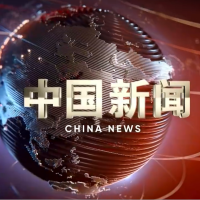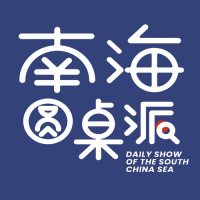



















Alert: “Shoulder-to-Shoulder” Drills Risk Stirring Camp Confrontation in the South China Sea
On the morning of April 22, 2024, the annual Philippines-US joint military exercises, dubbed “shoulder to shoulder”, officially kicked off in Manila. A statement by Philippine Navy spokesperson Trinidad before the start of the exercise gave this three-week “regular” drill a strong confrontational color.
According to information released by the Philippine military, the “shoulder-to-shoulder” drill not only gathered 16,700 Filipino and American soldiers, but also invited Australia and France to participate in some exercises. Another 14 countries participated as observers. The navies of the Philippines, the United States, and France will also hold trilateral joint patrols for the first time. In terms of exercise areas, this will be the first time that disputed areas beyond 12 nautical miles outside the Philippine territorial waters will be included. The exercise content will include simulating sinking target ships, reclaiming island control, and for the first time, the Philippine Coast Guard will deploy six vessels for the exercise.
Philippine Navy spokesperson Trinidad stated that the Philippines wants to convey a message through this joint military exercise, that “we are not alone, and we are ready to defend our sovereignty rights at any time.” Lieutenant General William M. Jurney, commander of the U.S. Marine Corps Forces, Pacific (MARFORPAC), also emphasized during the opening ceremony of the exercise that the “shoulder-to-shoulder” drills truly reflect “our mutual commitment to each other.”
Since the Marcos administration came to power in 2023, the US has repeatedly expanded and established military bases in the Philippines, providing arms aid and joint training for the Philippine Coast Guard and Navy, among other means, to support the Philippines in enhancing its maritime capabilities. The US also provides intelligence and public opinion support for the Philippines’ continuous provocative actions in the South China Sea, firmly aligning the Philippines with the US and exacerbating tensions between China and the Philippines.
At the recently concluded inaugural trilateral summit between the US, Japan, and the Philippines, President Biden reiterated the ironclad defense commitment to the Philippines, extending coverage to the South China Sea, and offered economic incentives under the PGI Luzon Economic Corridor for the Philippines. Simultaneously, the US military announced the deployment of a new land-based medium-range missile system in northern Luzon, Philippines, aimed at enhancing US-Philippine army coordination, readiness, and defense capabilities. The move was characterized by the Singaporean newspaper The Straits Times as “placing threatening weapons directly at China’s doorstep.”
With the dual endorsement of US military and economic support, the Philippine authorities appear confident, boldly disavowing the gentlemen’s agreement reached with China on the proper handling of the Ren’ai Jiao issue and hyping the “shoulder-to-shoulder” drills, “not ruling out the possibility of sending a message to our adversaries as well.”
However, Rommel Banlaoi, Chairman of the Philippine Institute for Peace, Violence, and Terrorism Research, explicitly opposed the Philippines’ aggressive actions when he talked to the media. He deems the military exercise in the South China Sea and near Taiwan as highly risky, challenging ASEAN’s neutrality principle and escalating regional conflicts by inviting other countries to participate.
Anna Rosario Malindog-Uy, Vice President of Asian Century Philippines Strategic Studies in the Philippines, criticizes the government’s hawkish strategy. She bluntly points out that the Marcos administration harbors unrealistic expectations from the United States, posing significant risks to the Philippines and regional security.
Li Kaisheng, Vice President of the Shanghai Institutes for International Studies, analyzes that the Philippines is hyping the “strong lineup” of the joint military exercise to stoke domestic nationalism under the guise of “support from the international community.” Additionally, the participation of various ASEAN countries, as well as extra-regional powers like France, Australia, Japan, and India, will definitely threaten ASEAN’s central position and reveal the Philippines’ attempt to hijack ASEAN’s South China Sea policy for its own interests.
The Philippines’ increasing departure from ASEAN’s collective policy on the South China Sea issue has raised concerns among ASEAN countries.
During a recent visit to the Philippines, Singapore’s Foreign Minister, Vivian, emphasized the importance of maintaining peace and stability in the South China Sea. He stressed that sovereignty disputes do not necessarily have to escalate into conflicts and that the South China Sea disputes should be resolved peacefully. Vivian added, “Escalation of tensions or incidents of collision or military action in the South China Sea would harm and impede international trade, raise shipping insurance costs, increase inflation in regional economies, and undermine people’s confidence.” He emphasized the need for ASEAN to maintain unity, cohesion, and its central position, being capable of handling the diverse realities of member states internally and their different responses externally.
During a joint press conference in Jakarta on April 18th, the Foreign Ministers of China and Indonesia reiterated their commitment to working with other ASEAN countries to comprehensively and effectively implement the Declaration on the Conduct of Parties in the South China Sea and accelerate the negotiations on the Code of Conduct, aiming to build the South China Sea into a sea of peace and cooperation.
While the overall situation in the South China Sea remains relatively stable, the negotiations on the Code of Conduct have reached the crucial stage of the third reading of the draft text. Amid the regional and Chinese calls for peace and development, the alignment of external powers with the Philippines only escalates the risk of maritime conflicts and instability in the region. Such consequences are not only challenging for the Philippines but are vehemently opposed and avoided by the entire region.
As warned by Filipino scholar Anna, diplomacy is a potent tool for conflict resolution. If the South China Sea disputes cannot be resolved through diplomatic means, the development of ASEAN and the so-called “Asian Century” will remain elusive dreams.



















